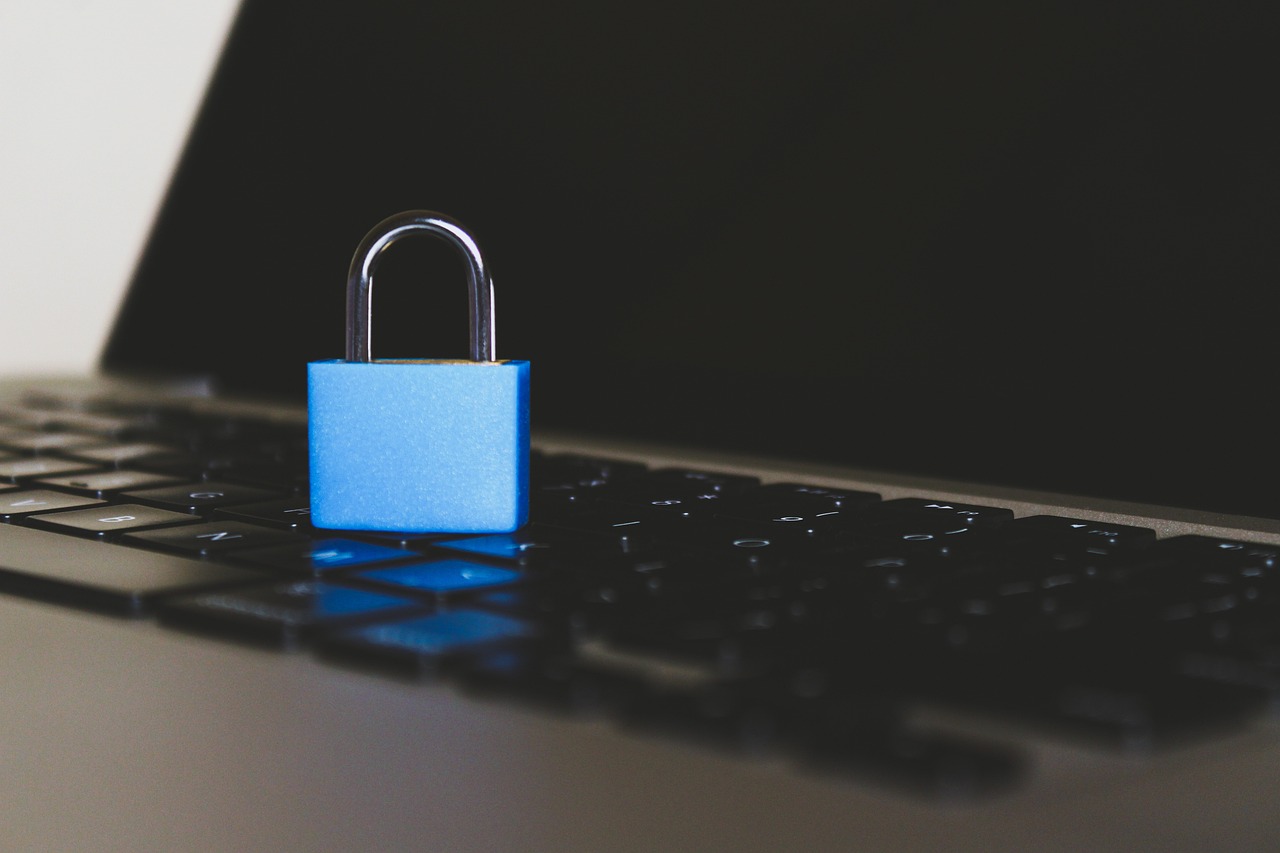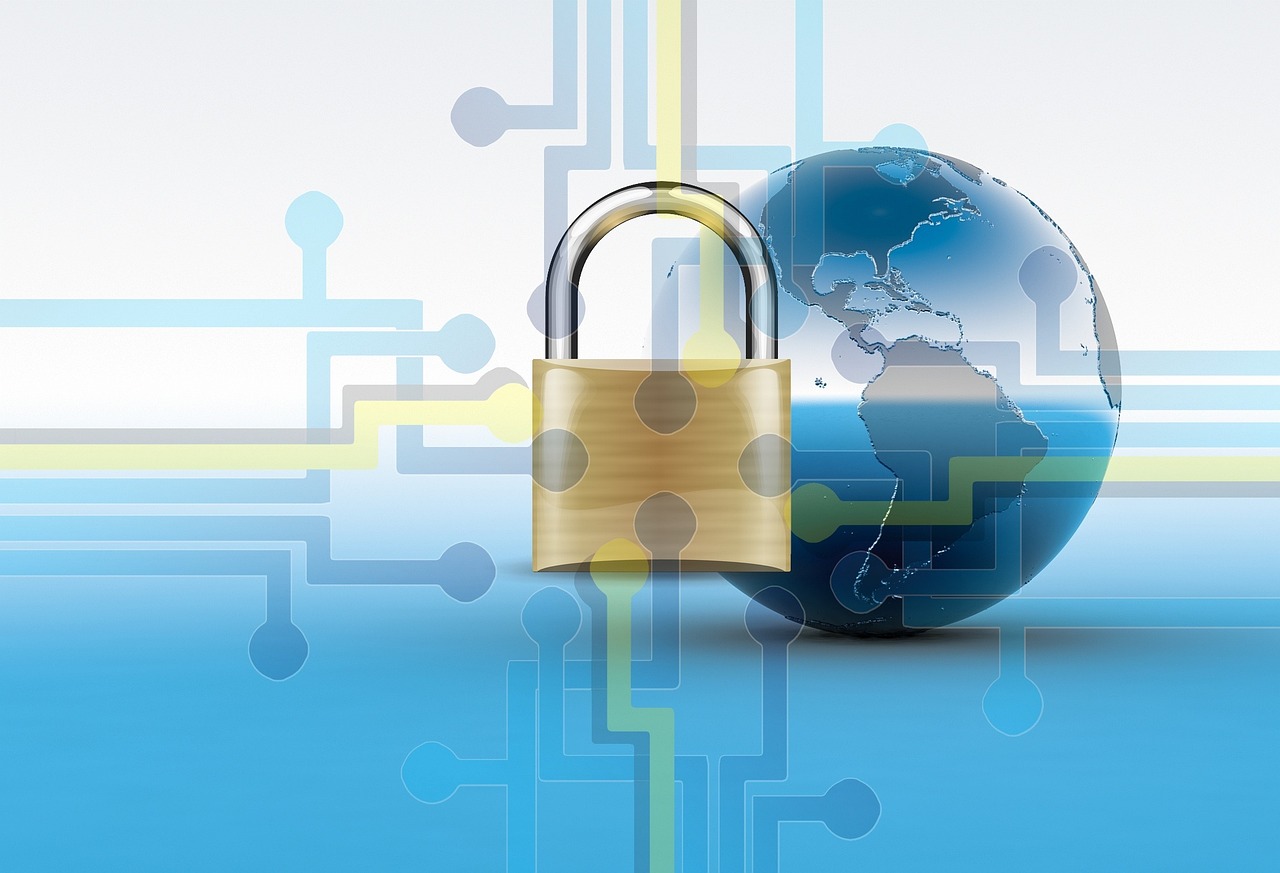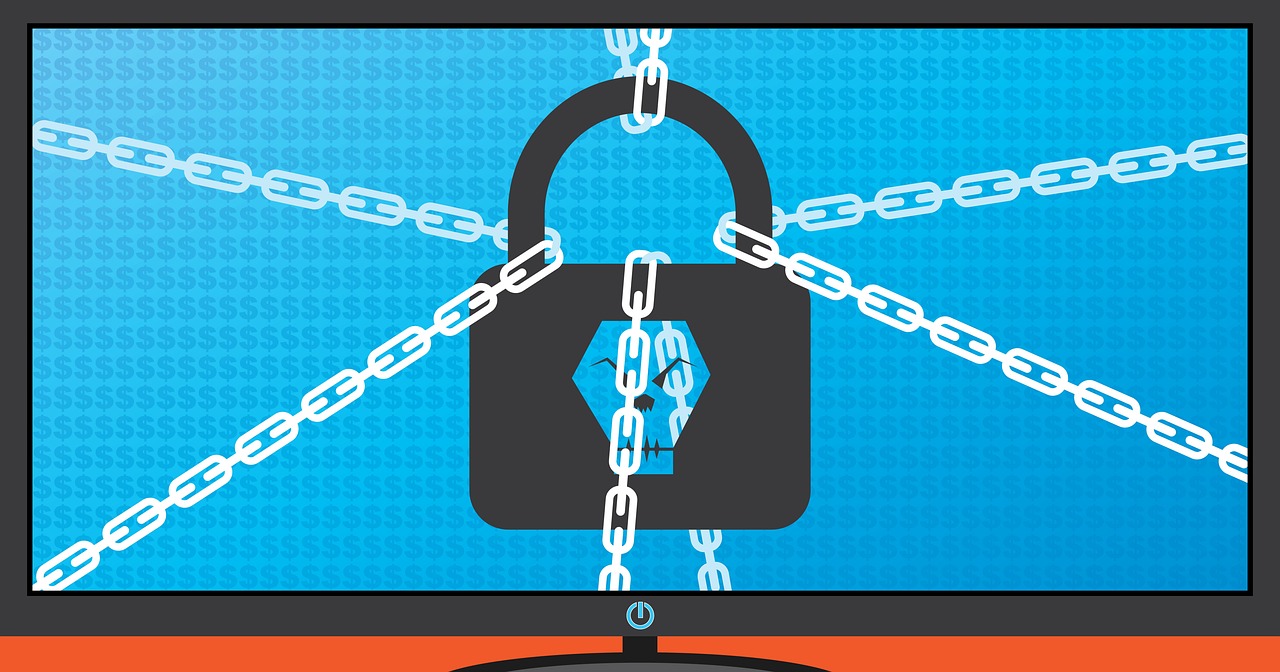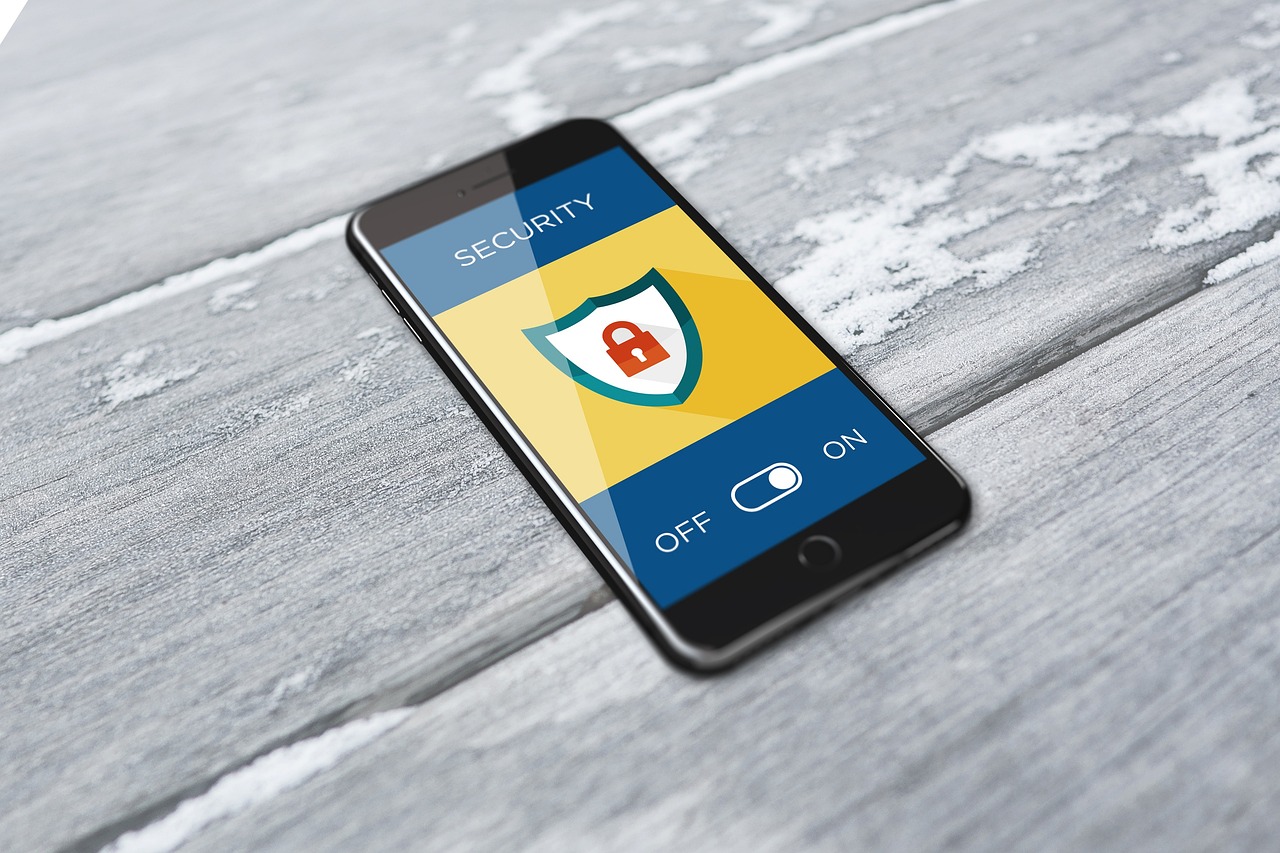How to Respond to a Cyber Attack
In today's digital landscape, the threat of cyber attacks looms larger than ever. Organizations of all sizes are finding themselves in the crosshairs of malicious actors looking to exploit vulnerabilities for financial gain or to wreak havoc. Responding effectively to a cyber attack is not just about putting out the fire; it's about understanding the nuances of the threat, mitigating damage, and ensuring that your organization emerges stronger and more resilient. This article outlines essential steps and strategies for effectively responding to a cyber attack, helping organizations mitigate damage, recover swiftly, and enhance their overall cybersecurity posture.
Before diving into the response strategies, it’s crucial to grasp the different types of cyber attacks that exist. Cyber attacks can range from malware that infects systems, to phishing schemes designed to trick individuals into revealing sensitive information, and even ransomware that holds data hostage. Each type of attack has its own implications, and understanding these can help organizations prepare better. For instance, while malware might slow down operations, ransomware can halt them entirely, demanding immediate action. By familiarizing yourself with these threats, you can better equip your organization to handle potential incidents.
When a cyber attack occurs, every second counts. The first step is to act swiftly to contain the breach. This means isolating affected systems to prevent further damage. Imagine your organization as a ship; if a leak is detected, you wouldn’t wait to see how bad it is before sealing it up. Quick action can save the ship from sinking. Communication is also vital during this time. Informing stakeholders—be it employees, clients, or partners—about the situation can help manage expectations and reduce panic. Initiating an incident response plan is equally important; this plan should outline specific roles and responsibilities to streamline the response efforts.
Once you've taken immediate action, the next step is to evaluate the extent of the attack. This involves identifying which systems were compromised and determining the nature of the data that may have been affected. Think of this as a forensic investigation; you need to gather evidence to understand what happened and how. Techniques such as network scanning and vulnerability assessments can aid in this process, helping to pinpoint the areas that need urgent attention.
Understanding which systems were breached is crucial for prioritizing recovery efforts. By scanning networks and analyzing logs, you can quickly identify the vulnerabilities that were exploited during the attack. It’s like tracing back the steps of a burglar to see how they managed to break into your home. The faster you can identify these entry points, the quicker you can fortify your defenses.
Next, you need to assess the nature of the compromised data. Not all data breaches are created equal; some may involve sensitive personal information, while others might just include less critical data. Understanding the sensitivity of the breached information is critical, as it has implications for affected parties. For instance, if customer data is involved, you may need to notify those customers and take steps to protect their information.
Effective communication during a cyber attack can significantly mitigate panic and misinformation. Establishing clear channels for both internal and external communication is essential. Internally, keep your team informed about the situation and the steps being taken to address it. Externally, consider drafting a public statement to inform clients and stakeholders, reassuring them that you are handling the situation. Transparency can go a long way in maintaining trust.
Involving cybersecurity professionals can significantly enhance your response efforts. When the situation escalates, enlisting external experts can provide the specialized knowledge needed to navigate complex cyber threats. These professionals can help you understand the attack vector and assist in recovery and investigation.
Selecting the appropriate cybersecurity team is crucial for effective resolution. Look for experts with proven qualifications and experience in handling similar incidents. Think of it as hiring a doctor; you want someone who specializes in the specific ailment your organization is facing. Check their references, review case studies, and ensure they have the necessary certifications to guide you through the recovery process.
After the dust has settled, conducting a thorough post-incident analysis is essential for improvement. This review should focus on what went well, what didn’t, and how your organization can better prepare for future attacks. It’s like a sports team reviewing game footage to identify weaknesses and improve performance. By learning from the incident, you can bolster your defenses and reduce the likelihood of a similar attack in the future.
Once you’ve responded to an attack, it’s time to bolster your cybersecurity measures. This involves implementing new strategies and protocols to enhance your defenses. Employee training is a critical component of this process; educating staff about cybersecurity best practices can empower them to recognize and respond to potential threats effectively. Regular system updates and patch management are also vital, as they help close vulnerabilities that attackers might exploit in the future.
Training programs should be designed to empower employees, helping them recognize phishing attempts and other common threats. Think of it as teaching them to recognize the signs of a fire before it spreads. The more aware your team is, the better equipped they’ll be to respond to potential threats.
Keeping systems updated is a key defense strategy. Regular software updates and patch management can close vulnerabilities that attackers exploit. Just like maintaining a car prevents breakdowns, staying on top of updates keeps your systems running smoothly and securely.
- What should I do first if I suspect a cyber attack? Immediately isolate affected systems and inform your incident response team.
- How can I prevent future cyber attacks? Implement robust cybersecurity measures, including employee training and regular system updates.
- When should I involve cybersecurity experts? If the attack is significant or you lack the expertise to handle it internally, seek external help.

Understanding Cyber Attacks
This article outlines essential steps and strategies for effectively responding to a cyber attack, helping organizations mitigate damage, recover swiftly, and enhance their overall cybersecurity posture.
In today's digital landscape, understanding cyber attacks is more important than ever. These attacks come in various forms, each with its own unique methods and potential impacts. From malware to phishing and ransomware, knowing what you’re up against is crucial for any organization. Imagine your computer system as a fortress; if you don’t know the types of threats lurking outside, how can you effectively defend it?
Let's break down some of the most common types of cyber attacks:
- Malware: This is malicious software designed to harm or exploit any programmable device or network. Think of it as a sneaky intruder that can steal your valuables without you even knowing.
- Phishing: This technique involves tricking individuals into providing sensitive information, often through deceptive emails or websites. It’s like someone pretending to be your bank to get your account number.
- Ransomware: A particularly nasty type of malware that locks users out of their systems until a ransom is paid. It’s akin to a hostage situation where your data is the hostage.
The implications of these attacks can be severe. They can lead to financial loss, data breaches, and even damage to an organization's reputation. For instance, a successful ransomware attack can cripple operations, leading to significant downtime and recovery costs. Understanding these threats allows organizations to prepare and respond more effectively.
Moreover, recognizing the potential impact of cyber attacks is crucial for individuals and businesses alike. A single breach can expose sensitive personal data, leading to identity theft or financial fraud. For businesses, the repercussions can be even more daunting, including legal ramifications and loss of customer trust. In a world where data is often considered the new oil, a breach can feel like a catastrophic spill.
In summary, understanding the various types of cyber attacks and their potential consequences is the first step in developing a robust response strategy. By being aware of the threats, organizations can better prepare themselves to defend against them, ensuring they are not caught off guard when an attack occurs.

Immediate Response Steps
When the storm of a cyber attack hits, your organization must act swiftly and decisively. The first moments after an attack are crucial; they can mean the difference between a minor inconvenience and a catastrophic breach. So, what should you do? The immediate response steps are like a lifebuoy thrown into turbulent waters—essential for survival.
First and foremost, you need to isolate affected systems. Think of it as containing a fire before it spreads. Disconnect any compromised devices from the network to prevent the attack from escalating. This might involve taking servers offline, shutting down workstations, or even disabling Wi-Fi access in some cases. The quicker you can cut off the attack's reach, the less damage it can inflict.
Next, it's vital to communicate with your stakeholders. This isn’t just about sending a quick email; it’s about crafting a clear and concise message that outlines what happened, what you’re doing about it, and how it affects them. Transparency is key. Keeping everyone in the loop can help mitigate panic and prevent the spread of misinformation. You might want to set up a dedicated communication channel for this purpose, ensuring that all updates are centralized and accessible.
Once you've isolated affected systems and communicated with stakeholders, it’s time to initiate your incident response plan. This plan should be a well-oiled machine, ready to kick into action at a moment’s notice. If you don’t have a plan in place, now is the time to create one. Your incident response should include:
- Assigning roles and responsibilities to team members.
- Documenting every action taken during the response.
- Gathering evidence for future analysis and potential legal action.
In the chaos of a cyber attack, having a structured response can help you regain control. Think of it as having a map in a dense forest; it guides you through the confusion and helps you find your way back to safety.
Once the initial chaos has settled, you must turn your attention to assessing the damage. This involves evaluating the extent of the attack and identifying what has been compromised. A thorough assessment not only informs your recovery efforts but also helps in preventing future incidents. You’ll want to look for:
- Compromised data: What information was accessed or stolen?
- Affected systems: Which devices were breached?
- Vulnerabilities: What weaknesses were exploited during the attack?
Understanding these elements is like piecing together a jigsaw puzzle; every piece matters in forming the complete picture of the attack's impact.
Identifying the systems that were breached is critical. This helps you prioritize your recovery efforts and ensures that you don’t overlook any compromised areas. Use network scanning tools to detect any unauthorized access points or malware infections. The quicker you can pinpoint the affected systems, the faster you can work on remediation.
Next up is evaluating the nature of the data breaches. Not all data is created equal, and understanding the sensitivity of the compromised information is crucial. Are we talking about customer emails, credit card information, or sensitive corporate data? Each type of data has different implications for affected parties and requires a tailored response strategy. This evaluation not only helps in informing affected individuals but also in managing potential legal repercussions.
In conclusion, the immediate response steps to a cyber attack are not just about putting out fires; they’re about laying the groundwork for recovery and future resilience. By isolating systems, communicating effectively, and assessing the damage, organizations can navigate the storm and emerge stronger on the other side.
Q: What is the first step I should take during a cyber attack?
A: Isolate affected systems immediately to prevent further damage.
Q: How important is communication during an incident?
A: Extremely important; clear communication can help mitigate panic and misinformation.
Q: Should I have an incident response plan in place before an attack?
A: Yes, having a pre-established plan is crucial for a swift and effective response.

Assessing the Damage
When the dust settles after a cyber attack, the first thing that comes to mind is, "What just happened?" Assessing the damage is a critical step in the recovery process. It’s akin to surveying a battlefield after a storm; you need to understand the extent of the devastation before you can start rebuilding. This involves a thorough evaluation of not just what was breached, but also how deep the impact goes.
One of the first actions to take is to identify which systems were compromised. This can be done through a combination of automated tools and manual checks. Think of it as a detective sifting through clues at a crime scene. You’ll want to look for signs of unauthorized access, unusual network activity, and any anomalies that could indicate a breach. The sooner you pinpoint the affected systems, the quicker you can start the recovery process.
Next up is evaluating the nature of the data that may have been compromised. Not all data is created equal, and understanding the sensitivity of the breached information is crucial. For instance, personal identifiable information (PII) like social security numbers or financial records can have far-reaching consequences if leaked. This is where it’s important to categorize the data into different sensitivity levels:
| Data Type | Sensitivity Level | Potential Impact |
|---|---|---|
| Personal Identifiable Information (PII) | High | Identity theft, legal penalties |
| Financial Data | High | Fraud, financial loss |
| Company Secrets | Medium | Competitive disadvantage |
| General Information | Low | Minimal impact |
Understanding these categories allows organizations to prioritize their response efforts effectively. For example, if high-sensitivity data is compromised, immediate action is necessary to mitigate potential fallout. This could involve notifying affected individuals or regulatory bodies, depending on the legal implications.
Lastly, assessing the vulnerabilities that were exploited during the attack is vital for preventing future incidents. This involves a detailed examination of your security protocols and identifying any gaps that may have allowed the breach to occur in the first place. It’s like looking for the weak spots in a fortress after an invasion; by fortifying these areas, you can better defend against future attacks.
In conclusion, assessing the damage after a cyber attack is not just about understanding what was lost; it’s about gathering intel to fortify your defenses for the future. By meticulously evaluating the affected systems, the nature of the compromised data, and the vulnerabilities that were exploited, organizations can not only recover more effectively but also strengthen their cybersecurity posture moving forward.
- What should be my first step after detecting a cyber attack? Immediately isolate affected systems to prevent further damage.
- How can I determine the extent of the damage? Conduct a thorough investigation of your systems and data to identify breaches.
- Should I inform my customers if their data is compromised? Yes, transparency is essential, and informing affected parties is often a legal requirement.
- How can I prevent future cyber attacks? Regularly update your systems, conduct employee training, and perform vulnerability assessments.

Identifying Affected Systems
When a cyber attack strikes, it's akin to a thief breaking into your home; the first step is to figure out what’s been taken and how they got in. Understanding which systems have been compromised is crucial for prioritizing recovery efforts and preventing further damage. This process involves a systematic approach to scanning networks and identifying vulnerabilities that attackers may have exploited.
One effective method to identify affected systems is by utilizing intrusion detection systems (IDS). These tools monitor network traffic and can alert you to suspicious activities that may indicate a breach. Additionally, regularly scheduled vulnerability scans can help pinpoint weaknesses in your system before they are exploited. Think of these scans as routine check-ups for your digital health; they help you stay ahead of potential threats.
Moreover, it’s essential to conduct a thorough review of your logs. Analyze system logs, firewall logs, and any other relevant records to trace the attack's origin. This is similar to piecing together a puzzle; each log entry provides a clue that can help you understand the attack vector. By identifying the entry points, you can take steps to strengthen those areas and prevent future incidents.
Another aspect to consider is the use of endpoint detection and response (EDR) solutions. These tools provide real-time monitoring and data collection from endpoints, allowing you to quickly identify which devices were affected. It’s like having a security camera that not only shows you what happened but also helps you react promptly. When you pinpoint the affected systems, you can begin to isolate them to prevent the spread of the attack.
In some cases, it may also be beneficial to engage in network segmentation. This practice involves dividing your network into smaller, manageable sections, making it easier to contain attacks and limit exposure. By implementing segmentation, you create barriers that attackers must overcome, thereby reducing the overall risk to your organization.
To summarize, identifying affected systems is a critical step in the aftermath of a cyber attack. By leveraging tools like IDS, reviewing logs, utilizing EDR solutions, and considering network segmentation, organizations can effectively respond to breaches and fortify their defenses for the future. Remember, the goal is not just to recover but to learn and strengthen your security posture.
If you're still unsure about how to navigate this complex landscape, consider reaching out to cybersecurity professionals who specialize in incident response. They can provide invaluable insights and assistance in identifying affected systems and mitigating damage.

Evaluating Data Breaches
When a cyber attack occurs, one of the most critical steps in your response plan is . This process involves understanding the nature of the compromised information and its potential implications for your organization and affected individuals. Just like a detective piecing together clues at a crime scene, you need to meticulously analyze what data was accessed, stolen, or altered during the breach.
Firstly, you should categorize the types of data that were compromised. This can include personal identifiable information (PII), such as names, addresses, and Social Security numbers; financial information, including credit card details and bank account numbers; or intellectual property, such as proprietary algorithms or trade secrets. Each type of data carries different risks and requires a tailored response strategy.
Next, assess the sensitivity of the breached data. For instance, if the breach involved PII, the consequences could range from identity theft to reputational damage. On the other hand, if sensitive corporate data was compromised, it might lead to significant financial losses or competitive disadvantages. Understanding the sensitivity helps prioritize your response efforts and informs stakeholders about potential risks.
Additionally, it's important to consider the scope of the breach. How many records were affected? Was it a small number of users, or did the breach impact a large segment of your customer base? The broader the impact, the more urgent your communication and remediation efforts will need to be.
To facilitate this evaluation, you might want to create a
| Type of Data | Sensitivity Level | Potential Implications |
|---|---|---|
| Personal Identifiable Information (PII) | High | Identity Theft, Reputational Damage |
| Financial Information | High | Fraud, Financial Loss |
| Intellectual Property | Critical | Competitive Disadvantage, Revenue Loss |
| Customer Data | Medium | Loss of Trust, Customer Churn |
Finally, after evaluating the data breach, it’s essential to document your findings thoroughly. This documentation will not only assist in your immediate response but also serve as a critical resource for legal and compliance purposes later on. Remember, the goal is to not just recover from the breach, but to learn from it and enhance your organization’s defenses against future attacks.
Q1: What should I do immediately after discovering a data breach?
A1: Isolate affected systems, assess the damage, and initiate your incident response plan without delay.
Q2: How can I determine the sensitivity of the breached data?
A2: Categorize the data into types, such as PII or financial information, and evaluate the potential risks associated with each type.
Q3: Why is it important to document the evaluation of a data breach?
A3: Documentation is vital for legal compliance, helps in understanding the breach's impact, and guides future security improvements.

Communication Strategies
When a cyber attack strikes, the chaos can feel overwhelming. One of the most critical aspects of managing this crisis is effective communication. Imagine you're in a ship that's suddenly hit by a storm; the way you communicate with your crew can mean the difference between sinking or sailing through the rough waters. In the context of a cyber attack, clear communication can help mitigate panic, reduce misinformation, and ensure that all stakeholders are on the same page.
First and foremost, it's essential to establish an internal communication plan. This plan should detail how information will flow within the organization. Who will be the spokesperson? What channels will be used? For instance, using secure messaging platforms can help disseminate information quickly while maintaining confidentiality. It's also vital to keep communication lines open among IT teams, management, and employees. Regular updates can prevent rumors from spreading and keep everyone informed about the situation.
Externally, communication can be a bit trickier. You may need to inform customers, partners, and even regulatory bodies about the incident. Transparency is key here. While it might be tempting to downplay the situation, honesty will build trust in the long run. Consider preparing a statement that outlines the nature of the attack, what measures are being taken to address it, and how it might affect the stakeholders. This could be shared via email, social media, or press releases, depending on the severity of the attack.
Moreover, having a predefined communication strategy can help streamline the process. Here are some elements to consider:
- Timeliness: Provide updates as soon as possible. Delaying communication can lead to speculation and anxiety.
- Clarity: Use straightforward language. Avoid technical jargon that might confuse recipients.
- Consistency: Ensure that all messages align with the organization's overall response strategy. Mixed messages can create confusion.
In addition to these strategies, consider employing a communication tool that allows for real-time updates. This tool can serve as a central hub where employees and stakeholders can access the latest information about the cyber attack and the organization's response. It's like having a lighthouse guiding ships safely to shore amidst a stormy sea.
Finally, after the incident has been resolved, it's crucial to evaluate the effectiveness of your communication strategies. What worked well? What could have been improved? Conducting a post-incident review can provide valuable insights that will enhance your organization's readiness for future incidents.
In summary, effective communication during a cyber attack is not just about relaying information; it's about fostering trust, reducing panic, and ensuring that everyone is working together to navigate the crisis. By prioritizing clear and timely communication, organizations can not only manage the immediate fallout but also strengthen their overall resilience against future cyber threats.
1. Why is communication important during a cyber attack?
Effective communication helps to mitigate panic, reduce misinformation, and ensure all stakeholders are informed and aligned in their response efforts.
2. What should be included in an internal communication plan?
An internal communication plan should outline the spokesperson, communication channels, and protocols for providing regular updates to employees and management.
3. How can organizations maintain transparency with external stakeholders?
Organizations should prepare clear statements about the nature of the attack, response measures, and potential impacts, sharing this information through appropriate channels like email and social media.
4. What are some best practices for post-incident communication review?
Best practices include evaluating the effectiveness of communication strategies, identifying what worked and what didn’t, and making necessary adjustments for future incidents.

Engaging Cybersecurity Experts
When a cyber attack strikes, the chaos can feel overwhelming. It's like a sudden storm that disrupts your entire operation. In such turbulent times, can be your lifeline. These professionals bring a wealth of knowledge and experience, helping you navigate the stormy waters of recovery and investigation. But when should you bring in the cavalry? The answer is simple: as soon as you recognize that an attack is underway or has occurred. The sooner you act, the better your chances of minimizing damage and restoring normalcy.
Cybersecurity experts come in various forms, each with unique skills tailored to specific needs. When choosing the right team, consider the following factors:
- Specialization: Ensure that the experts have experience with the type of attack you are facing, whether it's ransomware, phishing, or another form of intrusion.
- Reputation: Look for reviews and testimonials. A well-regarded firm can make a significant difference in your recovery efforts.
- Certifications: Check for relevant certifications such as Certified Information Systems Security Professional (CISSP) or Certified Ethical Hacker (CEH) to ensure they have the necessary expertise.
Once you've engaged the right experts, they will typically follow a structured approach to address the attack. This includes:
| Phase | Description |
|---|---|
| Assessment | Evaluating the extent of the breach and identifying compromised systems. |
| Containment | Isolating affected systems to prevent further damage. |
| Eradication | Removing the threat from the environment and closing vulnerabilities. |
| Recovery | Restoring systems to normal operations and monitoring for any signs of weaknesses. |
| Post-Incident Review | Conducting a thorough analysis of the incident to improve future defenses. |
Bringing in cybersecurity experts not only aids in immediate recovery but also sets the stage for long-term improvements. They can provide insights into your existing security posture and recommend enhancements tailored to your organization's unique needs. Think of them as your personal trainers for cybersecurity, helping you build resilience against future attacks.
In conclusion, engaging cybersecurity experts is not just about resolving a current crisis; it's about fortifying your defenses for the future. By investing in professional help, you're not only safeguarding your organization but also ensuring peace of mind for your stakeholders. Remember, in the world of cybersecurity, it's always better to be proactive than reactive.
Q: How do I know when to hire cybersecurity experts?
A: If you detect unusual activity, experience a data breach, or feel overwhelmed by the response process, it's time to call in the experts.
Q: What should I look for in a cybersecurity firm?
A: Look for specialization, a strong reputation, and relevant certifications to ensure they have the necessary expertise to handle your needs.
Q: Can cybersecurity experts help prevent future attacks?
A: Absolutely! They can assess your current security protocols and recommend improvements to enhance your defenses against future threats.

Choosing the Right Experts
When your organization faces a cyber attack, the urgency to resolve the issue can lead to hasty decisions, especially when it comes to selecting cybersecurity experts. However, choosing the right professionals is not just about quick fixes; it's about finding a team that understands your unique needs and can effectively mitigate the damage while preventing future incidents. So, how do you sift through the myriad of options available to find the right experts? The first step is to assess their qualifications and experience.
Start by looking for certifications that are respected in the cybersecurity industry. Certifications such as CISSP (Certified Information Systems Security Professional), CEH (Certified Ethical Hacker), or CISM (Certified Information Security Manager) indicate a solid foundation of knowledge and skills. Additionally, consider their experience with incidents similar to yours. Have they dealt with ransomware attacks before? How about data breaches? A team that has successfully navigated similar challenges can provide invaluable insights and strategies tailored to your situation.
Another critical aspect of choosing the right experts is their approach to communication. During a crisis, clear and effective communication is paramount. You want to ensure that the experts you hire can articulate their findings and recommendations in a way that is understandable to both technical and non-technical stakeholders. Ask potential candidates how they plan to keep you informed throughout the incident response process. A good cybersecurity team will prioritize transparency and collaboration, making it easier for you to make informed decisions.
Furthermore, consider the tools and technologies they utilize. The cybersecurity landscape is ever-evolving, and the right experts should be well-versed in the latest tools for threat detection, incident response, and forensics. Inquire about the methodologies they employ and how they stay updated with emerging threats. An expert who is proactive about continuous learning and adaptation can better protect your organization from future attacks.
Lastly, don’t underestimate the importance of cultural fit. Cybersecurity is not just a technical challenge; it’s also about people. The experts you choose should align with your organization’s values and work ethic. This alignment fosters a collaborative environment where everyone, from your internal team to the cybersecurity experts, can work together seamlessly. In the end, a strong partnership will not only help you recover from the current incident but also fortify your defenses for the future.
In summary, when selecting cybersecurity experts, focus on their qualifications, experience, communication skills, technological proficiency, and cultural fit. Taking the time to evaluate these factors can make a significant difference in your organization’s ability to respond effectively to cyber threats.
- What qualifications should I look for in a cybersecurity expert? Look for certifications such as CISSP, CEH, or CISM, as well as experience with incidents similar to yours.
- How important is communication during a cyber attack? Very important! Clear communication helps keep all stakeholders informed and ensures a coordinated response.
- What tools should cybersecurity experts be familiar with? They should be well-versed in the latest threat detection, incident response, and forensic tools.
- How can I ensure a good cultural fit with the cybersecurity team? Assess their alignment with your organization’s values and work ethic during the selection process.

Post-Incident Analysis
Once the dust settles after a cyber attack, it’s time to roll up your sleeves and dive into a . Think of it as a detective story where you’re trying to piece together what happened, why it happened, and how to prevent it from happening again. This phase is not just a formality; it’s a crucial step that can significantly enhance your organization's resilience against future threats.
The first step in this analysis is to gather all relevant data from the incident. This includes logs, alerts, and any other information that can provide insight into the attack. You might want to create a timeline of events to visualize how the attack unfolded. This can help in understanding the sequence of actions taken by both the attackers and your response team. The clearer the picture you paint, the easier it will be to identify gaps in your defenses.
Next, it’s essential to evaluate the effectiveness of your incident response plan. Ask yourself: Did our team respond swiftly? Were the right protocols followed? This reflection can uncover strengths and weaknesses in your existing plan. For instance, if communication broke down during the incident, it’s a red flag that needs addressing. A table summarizing your response efforts versus the actual outcomes can be a handy tool here:
| Response Action | Expected Outcome | Actual Outcome | Lessons Learned |
|---|---|---|---|
| Isolation of affected systems | Minimize further damage | Partially successful | Need faster isolation protocols |
| Stakeholder communication | Maintain trust | Confusion among staff | Improve internal messaging |
| Data recovery efforts | Restore operations quickly | Delays in recovery | Review backup procedures |
Moreover, it’s important to analyze the attack vectors used by the cybercriminals. Understanding how they breached your defenses can inform your future strategies. Was it a phishing email that tricked an employee? Or perhaps outdated software that was exploited? By identifying these vectors, you can fortify those weak points, making it harder for attackers to succeed in the future.
Finally, don't forget to document everything. A comprehensive report detailing the incident, your response, and the subsequent analysis will serve as a valuable resource for training and future reference. This document should be shared with your team and relevant stakeholders to foster a culture of transparency and continuous improvement. Remember, in the world of cybersecurity, knowledge is power!
- What should be included in a post-incident analysis report?
A post-incident analysis report should include a timeline of the incident, the response actions taken, the effectiveness of those actions, lessons learned, and recommendations for future prevention.
- How can we ensure our team is prepared for future incidents?
Regular training and simulation exercises can help ensure that your team is well-prepared. Additionally, reviewing and updating your incident response plan based on lessons learned is crucial.
- What are common mistakes to avoid during a post-incident analysis?
Common mistakes include failing to document the incident properly, not involving all relevant stakeholders, and neglecting to review the effectiveness of the response plan.

Strengthening Cybersecurity Measures
After a cyber attack, the focus shifts from recovery to fortification. It's not just about patching up the wounds; it's about building a fortress that can withstand future assaults. Organizations must adopt a proactive approach to cybersecurity, ensuring that their defenses are not only robust but also adaptable to the ever-evolving threat landscape. This involves a combination of technological upgrades, policy enhancements, and, perhaps most importantly, employee education.
One of the first steps in strengthening cybersecurity measures is to conduct a comprehensive risk assessment. This process involves identifying potential vulnerabilities within your systems and evaluating the impact of possible threats. By understanding where your weaknesses lie, you can prioritize your efforts and allocate resources effectively. For instance, if you discover that a significant portion of your data is stored on outdated systems, it’s time to consider upgrading those systems to mitigate risks.
In addition to technological upgrades, implementing employee training programs is crucial. Employees are often the first line of defense against cyber threats, and their awareness can make a significant difference. Regular training sessions should cover topics such as recognizing phishing attempts, creating strong passwords, and understanding the importance of data protection. By fostering a culture of cybersecurity awareness, you empower your staff to act as vigilant guardians of your organization’s information.
Moreover, regular system updates play a vital role in cybersecurity. Keeping software and systems up to date ensures that you are protected against known vulnerabilities. Cyber attackers often exploit outdated software, so establishing a routine for updates and patch management is essential. Consider implementing an automated system that notifies you of available updates, ensuring that your defenses are always current.
Another effective strategy is to adopt a multi-layered security approach. This involves using various security measures in tandem to create multiple barriers against potential attacks. For example, combining firewalls, intrusion detection systems, and endpoint protection can significantly enhance your overall security posture. Each layer serves as a safety net, catching threats that might slip through the cracks of another layer.
Finally, organizations should not underestimate the importance of incident response planning. Having a well-defined incident response plan ensures that everyone knows their roles and responsibilities in the event of a cyber attack. This plan should be regularly updated and tested through simulations to ensure its effectiveness. A well-prepared organization can respond swiftly and efficiently, minimizing damage and downtime.
- What are the most common types of cyber attacks? Cyber attacks can take many forms, including phishing, malware, ransomware, and denial-of-service attacks.
- How often should I update my cybersecurity measures? Regular updates should be part of your routine, ideally assessed quarterly or after any significant incident.
- What should I include in an incident response plan? Your plan should outline roles, communication strategies, recovery steps, and post-incident analysis procedures.
- How can I train my employees effectively? Consider a mix of online courses, workshops, and regular updates on emerging threats to keep your team informed and engaged.

Implementing Employee Training
In today's digital landscape, where cyber threats are lurking around every corner, employee training is not just a good idea—it's a necessity. Imagine your organization as a fortress; your employees are the guards. If they’re not trained well, even the sturdiest walls can be breached. So, how do you ensure your guards are prepared for battle against cyber attacks?
First and foremost, it's crucial to develop a comprehensive training program that covers the fundamentals of cybersecurity. This program should include topics such as recognizing phishing emails, understanding the importance of strong passwords, and knowing how to report suspicious activities. The goal is to make employees aware of the potential threats and equip them with the tools they need to defend against them.
One effective approach is to incorporate interactive elements into your training. For instance, consider using simulated phishing attacks to test employees' responses. This not only raises awareness but also allows employees to learn from their mistakes in a safe environment. After all, practice makes perfect! You can also utilize engaging materials like videos, quizzes, and real-life case studies to keep the training interesting and informative.
Moreover, it’s essential to tailor the training to different roles within the organization. For example, IT staff may require advanced training on network security, while non-technical employees might benefit more from basic awareness sessions. This targeted approach ensures that every employee receives relevant information that they can apply in their daily tasks.
Additionally, regular training sessions should be scheduled to keep cybersecurity at the forefront of employees' minds. Cyber threats are constantly evolving, and so should your training. Implementing a continuous learning environment can significantly enhance your organization’s defenses. This could be in the form of monthly workshops, quarterly refreshers, or even an annual cybersecurity awareness week.
Finally, don't forget to measure the effectiveness of your training program. This can be done through assessments and feedback surveys. By understanding what works and what doesn’t, you can continuously improve your training efforts. Remember, the more knowledgeable your employees are, the stronger your organization’s cybersecurity posture will be.
- How often should employee training be conducted?
It's recommended to have initial training for all new employees, followed by regular refreshers at least once a year, or more frequently if there are significant changes in your cybersecurity protocols. - What topics should be included in cybersecurity training?
Key topics include phishing awareness, password management, data protection, and incident reporting procedures. - Can training be done online?
Absolutely! Online training modules can be an effective way to reach a larger audience and provide flexibility for employees.

Regular System Updates
Keeping your systems updated is not just a good practice; it's a critical defense strategy against cyber threats. Think of your software as a fortress. Over time, cracks can appear, and if you don't patch them up, intruders can easily break in. Regular system updates serve as the maintenance crew that ensures your fortress remains impenetrable.
When we talk about system updates, we refer to a variety of enhancements that software developers release periodically. These updates can include security patches, bug fixes, and new features. Each update is designed to address vulnerabilities that could be exploited by cybercriminals. For instance, when a new vulnerability is discovered in a widely used software, developers rush to create a patch to fix it. If you delay installing these updates, you're essentially leaving the door wide open for attackers.
Moreover, updates are not solely about security; they also improve overall system performance. By regularly updating your software, you can enhance speed, fix glitches, and even enjoy new functionalities that can boost productivity. It's like upgrading from an old car to a new model—suddenly, everything runs smoother, and you can enjoy the ride much more!
To ensure you never miss an update, consider implementing a routine schedule. Here are some tips:
- Set Automatic Updates: Most operating systems and software applications offer the option to enable automatic updates. This feature ensures that your software is always up to date without requiring manual intervention.
- Regularly Check for Updates: Even with automatic updates, it's wise to periodically check for updates yourself, especially for critical software like antivirus programs.
- Prioritize Updates: Some updates are more critical than others. Always prioritize security patches over feature updates to maintain your system's integrity.
In addition to these practices, it’s vital to maintain an inventory of all software used within your organization. This inventory will help you keep track of what needs updating and when. You can create a simple table to manage this:
| Software Name | Last Updated | Next Scheduled Update | Notes |
|---|---|---|---|
| Operating System | 2023-10-01 | 2023-11-01 | Security patch applied |
| Antivirus Software | 2023-09-15 | 2023-10-15 | Check for new features |
| Office Suite | 2023-08-20 | 2023-10-20 | Performance improvements pending |
Finally, don't forget about employee awareness. Even if your systems are up to date, human error can still lead to vulnerabilities. Train your employees to recognize the importance of updates and encourage them to report any issues they encounter. By fostering a culture of cybersecurity, you can ensure that everyone plays a part in keeping your organization safe.
- How often should I update my software? It's recommended to check for updates at least once a month, but enabling automatic updates is the best way to stay secure.
- What happens if I don't update my software? Failing to update can leave your systems vulnerable to cyber attacks, as outdated software may contain known security flaws.
- Are all updates necessary? While not every update is critical, security patches are essential. Always prioritize these to protect your data and systems.
Frequently Asked Questions
- What should I do first if my organization experiences a cyber attack?
Immediately isolate affected systems to prevent the spread of the attack. Notify your incident response team and communicate with stakeholders to keep everyone informed. Initiating your incident response plan is crucial at this stage to ensure a structured response.
- How can I assess the damage after a cyber attack?
Begin by identifying the systems that were compromised. Conduct thorough scans of your network to pinpoint vulnerabilities that were exploited. Evaluating the nature of the data breaches is also essential to understand the potential impact on your organization and affected individuals.
- What are effective communication strategies during a cyber attack?
Clear and timely communication is vital. Keep internal teams updated about the situation to mitigate panic. For external communication, ensure that you provide accurate information to prevent misinformation and maintain trust with your stakeholders.
- When should I engage cybersecurity experts?
If the attack is severe or beyond your team’s expertise, it's time to bring in external cybersecurity professionals. They can assist with recovery efforts, investigation, and implementing stronger security measures to prevent future incidents.
- How can I strengthen my organization’s cybersecurity measures post-attack?
Focus on employee training to ensure all staff are aware of best practices in cybersecurity. Regularly update and patch your systems to close any vulnerabilities that attackers might exploit. Implementing a robust cybersecurity policy is also essential for long-term protection.
- What should I include in employee training programs?
Training should cover recognizing phishing attempts, safe internet practices, and how to respond to suspected threats. Role-playing scenarios can be effective for hands-on learning, making employees feel more confident in their ability to handle potential cyber threats.
- Why is post-incident analysis important?
Conducting a post-incident analysis helps identify what went wrong and what worked well during the response. This review is crucial for learning lessons that can improve future responses and strengthen your overall cybersecurity posture.



















